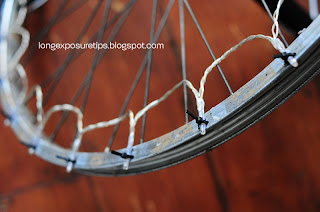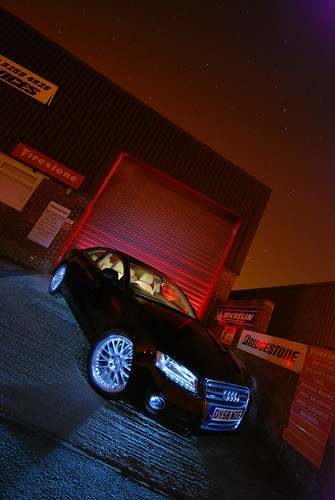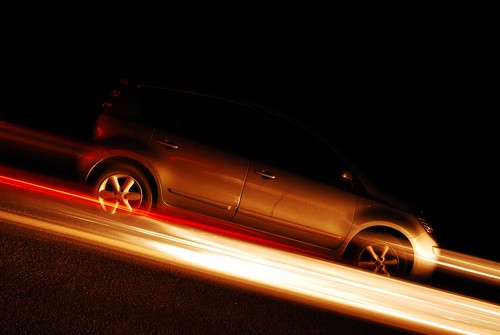The changes were tiny at first, and I barely noticed them.
But soon the patches of darkness caused by increasing distances between streetlights meant there were places for people to hide. I stopped beneath a lamp to question whether I was doing the right thing, out after midnight in a town I don't know in a country whose language I don't speak.
On the one hand I was tired, having walked many km over the last 24 hrs looking for potential locations; my legs were starting to whisper that they didn't have much left in them.
On the other hand, I hadn't seen a soul since I left the hotel so what were the chances of needing to flee from an aggressive stranger?
 |
| Turning Point: where the houses started to change (© Google) |
It wasn't until I saw a small dinghy in someone's front garden that I knew my hunch was going to pay off. Looking out over water from this near-island city would mean looking towards nothing but clear dark skies. Shuffling my camera over my shoulder felt reassuring, serving as a reminder how I'd found myself in this moment.
I walked on.
Just a few hundred metres further I found the lake and spent a few minutes watching the settled mist on the water. One of the most common disruptions to night photography is a lens that won't stop misting over. Would it happen to me? Hopefully the time spent with gear over my shoulder had allowed it to adjust to the ambient temperature.
 |
| Nearly... couldn't make a landscape version work |
When I'm out on location, one of the ways I double-check my alignments is to fire off a test shot then zoom in to a horizontal or vertical line within the frame to see if it runs parallel to the margins of the camera's preview screen. Unable to make out any usable reference points, it took several attempts on this occasion.
Having gone to the expense of hiring a fast, wide lens, I wanted to shoot at f/1.4 so that was the first setting to get dialled in. My ISO started at 200 which is the native setting on the D300- the point at which its most comfortable; the point with the most dynamic range.
Next up, 30sec on the exposure duration. It's the longest most cameras will expose for without manual intervention which makes it ideal for star trails where you want to fire off dozens of frames continuously with the cable release locked down.
I shot a frame at those settings and reviewed: the stars were coming through just fine but the scene was darker than I liked. I added light with exposure adjustments and a minor ISO shift then set the shutter running.
Couple of little tips for you: an intervalometer would have made things so much easier than standing next to the camera throughout the exposure, clicking the shutter cable closed then open again at a precise frequency. Without the intervalometer I ran the risk of missing an interval, or knocking the tripod, or some other element of human error. As it was, the timer on my phone alerted me to each passing minute and, fortunately, things turned out good.
Secondly, standing in the dark my camera becomes the brightest object around when I preview my shots. The LCD brightness is turned down to compensate but I always add up to 2/3rds stop of light to what looks like the right settings, just to be sure.
Starting to feel the cold of the Finnish autumn and aching from shutter RSI, it was time to pack up, but not yet time to let my guard down. With the reverse walk ahead of me I pocketed the memory card, a habit to safeguard my work, and headed back to the hotel.
 |
| Route: Thankfully I travelled light for the walk (© Google) |
At home, I'd have fired up the MacBook straight away to start with the process of stacking. A room full of family told me that was a bad idea so the PP waited till morning.
For a single frame of pinprick stars an optimised image requires more extensive PP. But with startrails filling the sky so comprehensively, the effort invested in setting up the camera on-location means a light-handed approach to PP is fine. Camera JPGs were stacked in StarStaX before being imported to PS for minor tweaks to WB, contrast and saturation.
I guess the changes are tiny, and you'd barely notice them.
























